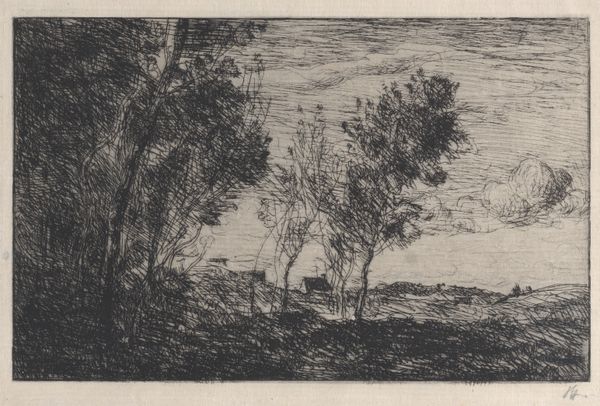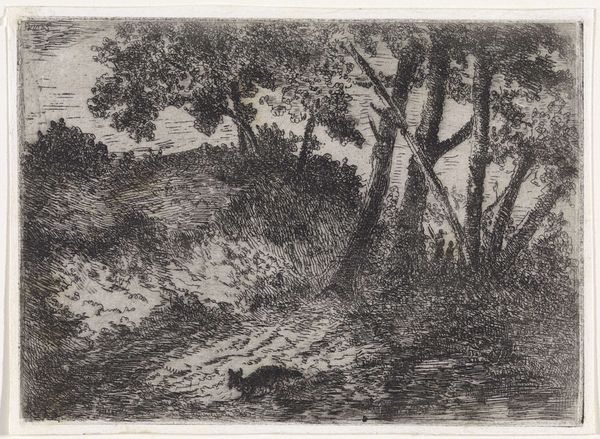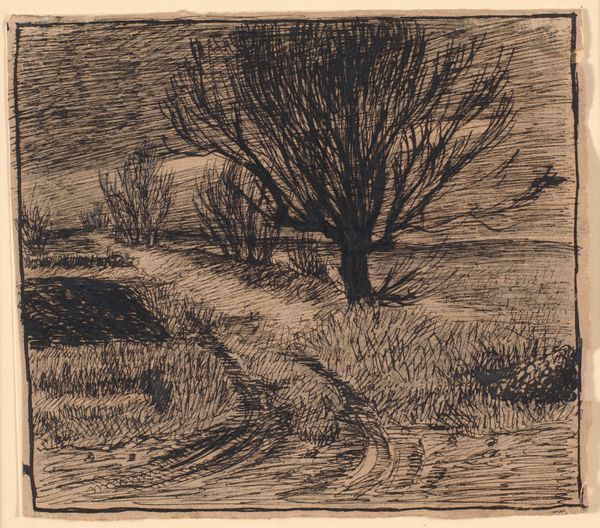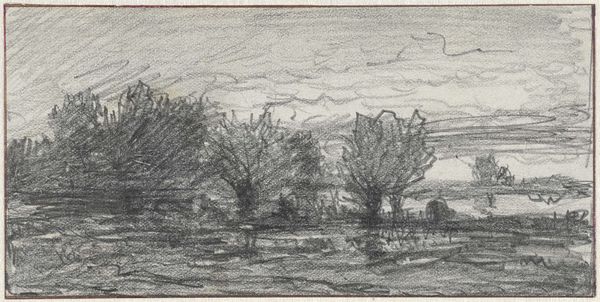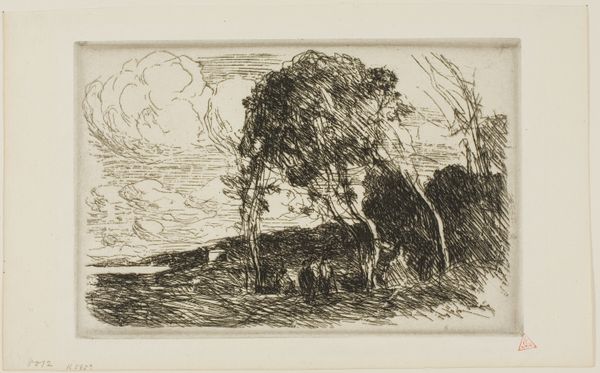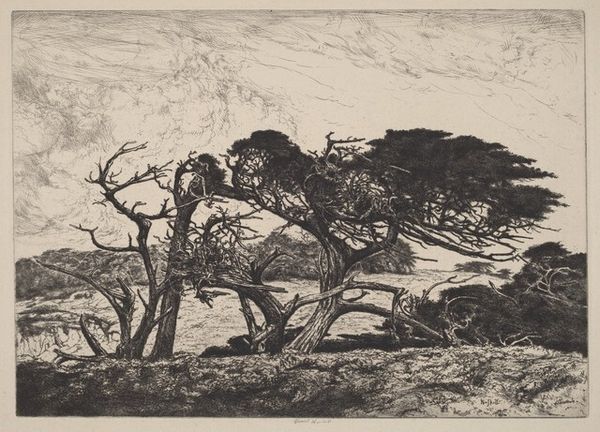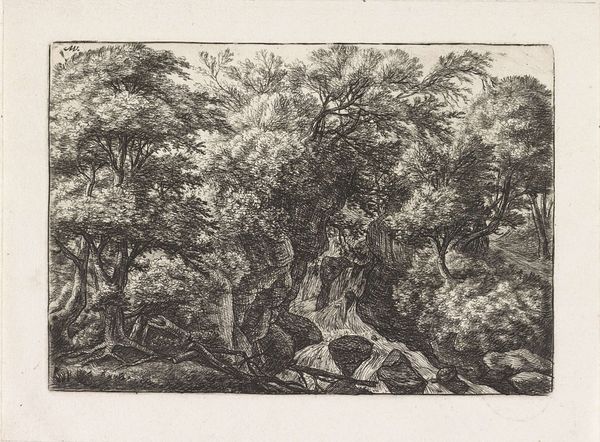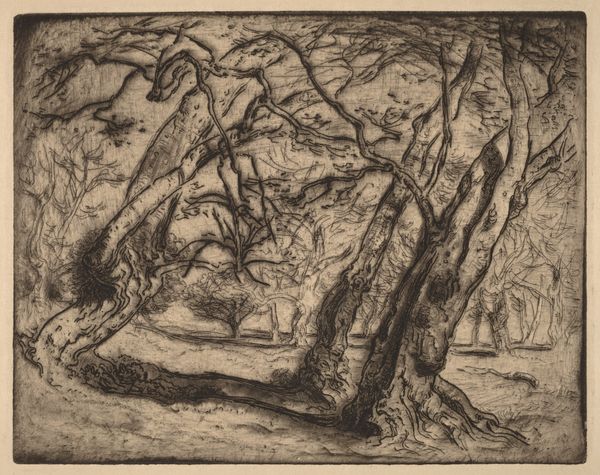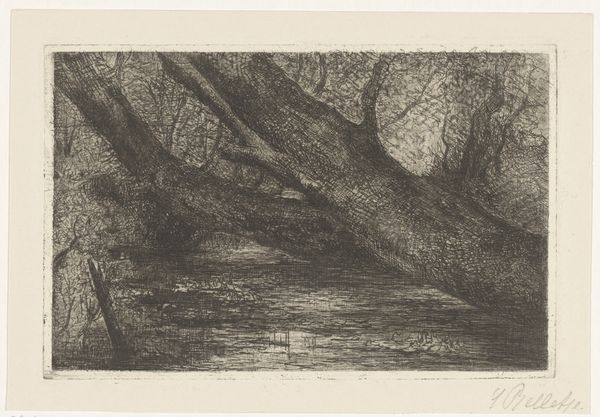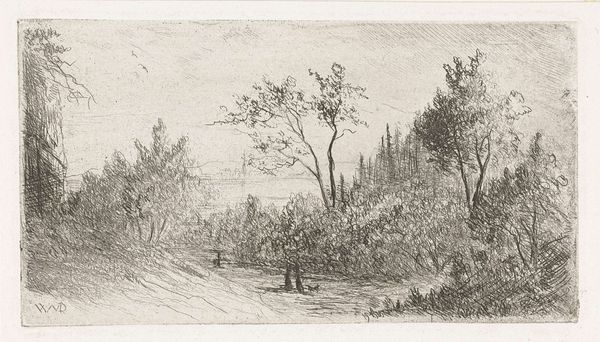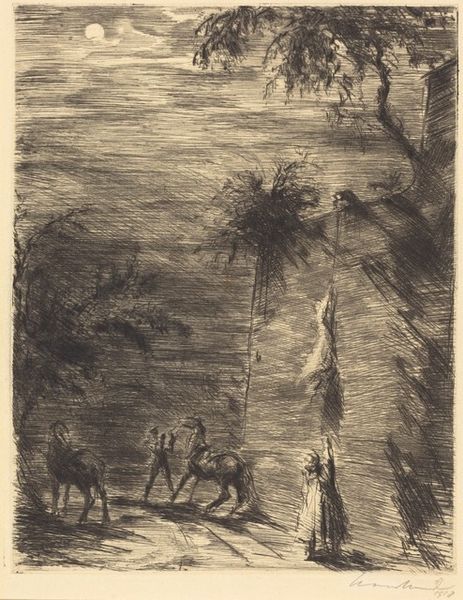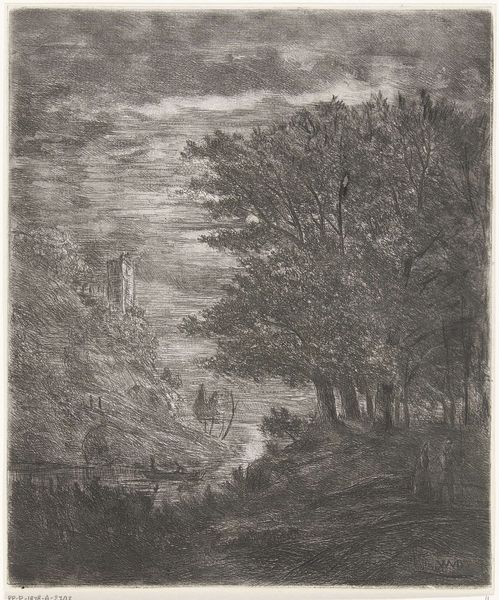
drawing, print, graphite
#
drawing
# print
#
landscape
#
pencil drawing
#
line
#
graphite
#
surrealist
Dimensions: Image: 270 x 387 mm Sheet: 355 x 549 mm
Copyright: National Gallery of Art: CC0 1.0
Curator: Standing before us is "Olive Trees," a 1931 drawing by John W. Taylor. Created using graphite, the piece captures a grove of olive trees. What are your first thoughts looking at it? Editor: There’s something haunting about this, isn't there? The contrast is so stark, almost like a dreamscape. The trees feel like they're bending, almost whispering secrets in the wind. And the dark sky brooding behind it all...makes you think about a restless night. Curator: The artist uses heavy contrasts and sweeping lines in what is described as a surrealist style. You mentioned the bending trees and that resonates because olive trees often serve as potent symbols. In art history, they can represent peace, hope, or resilience. Given the period in which Taylor made this, it makes me wonder about its meaning against the backdrop of the early Depression years. Editor: Yes, that historical grounding lends more layers to the artwork. Suddenly the way those lines are drawn – the energy of the wind blowing through the trees, perhaps represents turbulence, worry, struggle to stay standing. This piece becomes much more than just olive trees. But what makes it feel hopeful, to me, is the persistence, this almost valiant, stubborn staying put despite everything that is seemingly trying to shake it apart. Curator: It’s a small figure of humanity too between the trees adding to the reflection. Taylor's choice of print as a medium allowed for wider distribution, fitting, since many saw art as a vital means for public dialogue and perhaps even, encouragement, during times of economic and social unease. Editor: Makes you appreciate the artist's message even more, the decision to make it so accessible, right? Like planting seeds of resilience. This isn't a grand, inaccessible statement – it's intimate, accessible. Graphite on paper allows us to see and consider every carefully planned mark the artist wanted us to see. You know I bet the choice to work in stark contrast helped amplify that accessibility, almost as if shouting into the silence and anxiety. Curator: And perhaps creating a starker reality is just what people needed during those trying times. Editor: Right? Instead of shying away from the struggle. Well, whatever Taylor intended, standing here in front of "Olive Trees," that message rings clearly across all these decades. That it whispers in those very haunting lines. I might need to pick up my pencils and attempt to set down what I see into life myself. Curator: A sentiment that likely brings the message to the next generation, I will surely carry this inspiration into my next visit with scholars.
Comments
No comments
Be the first to comment and join the conversation on the ultimate creative platform.
